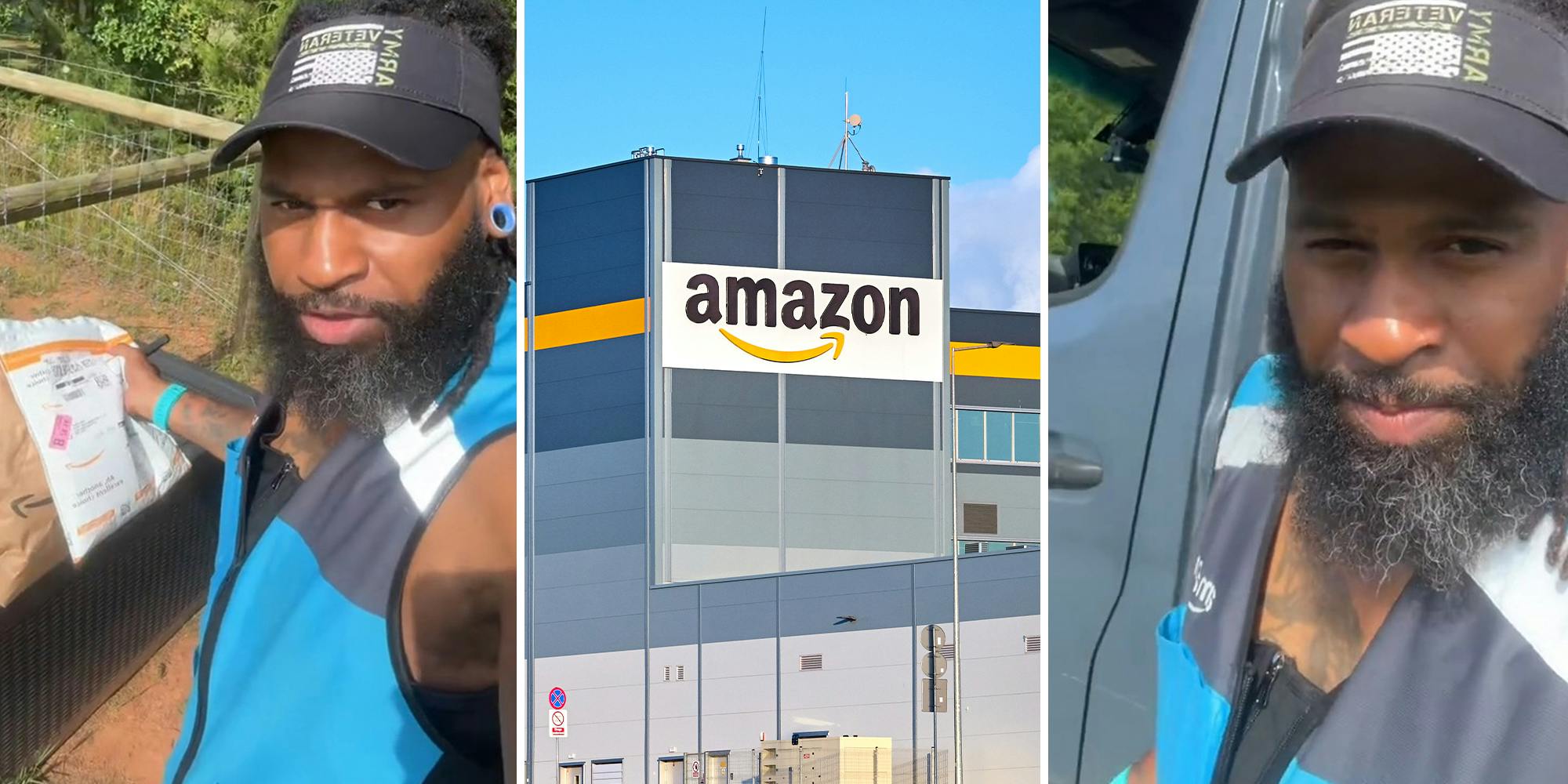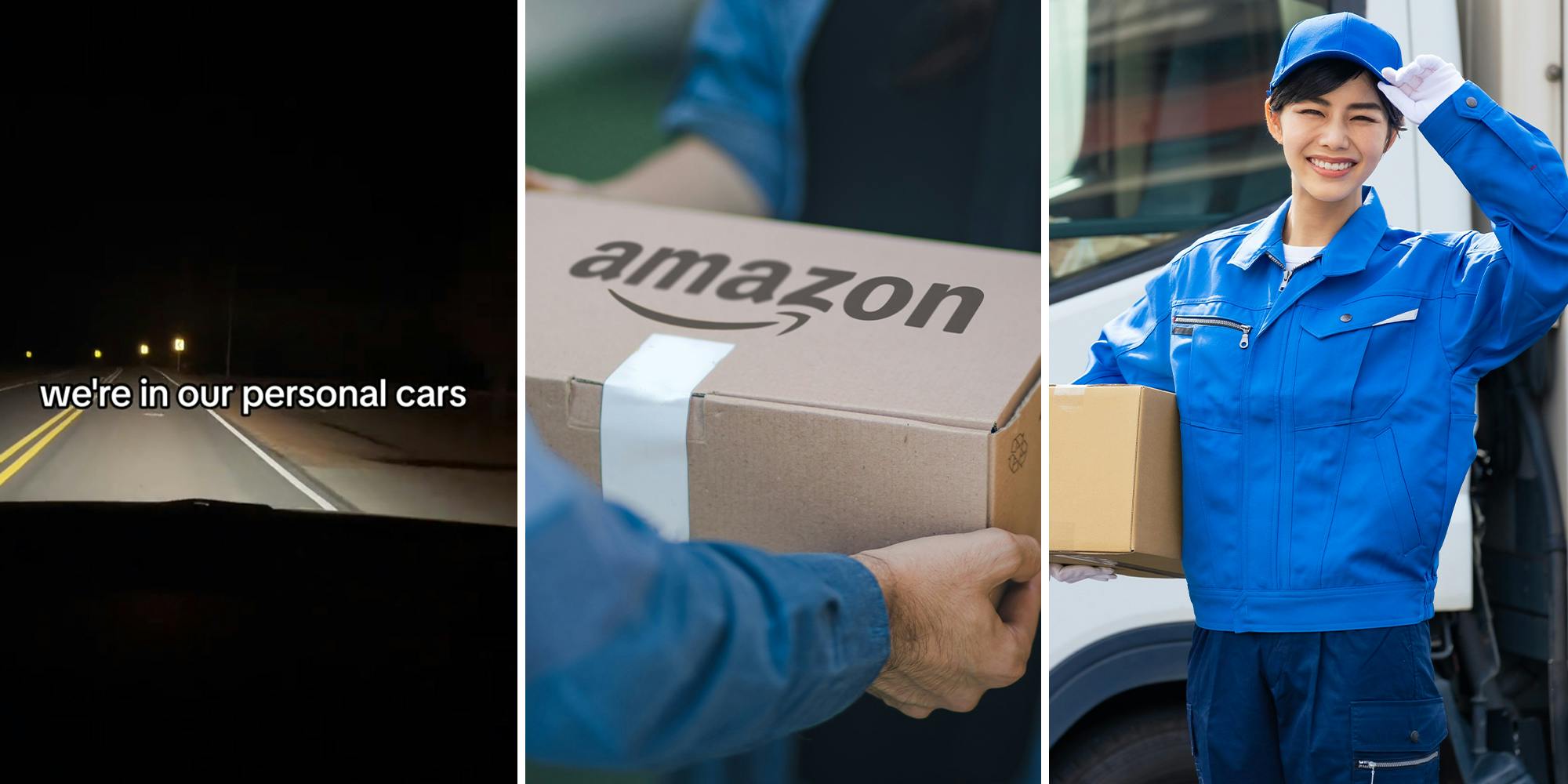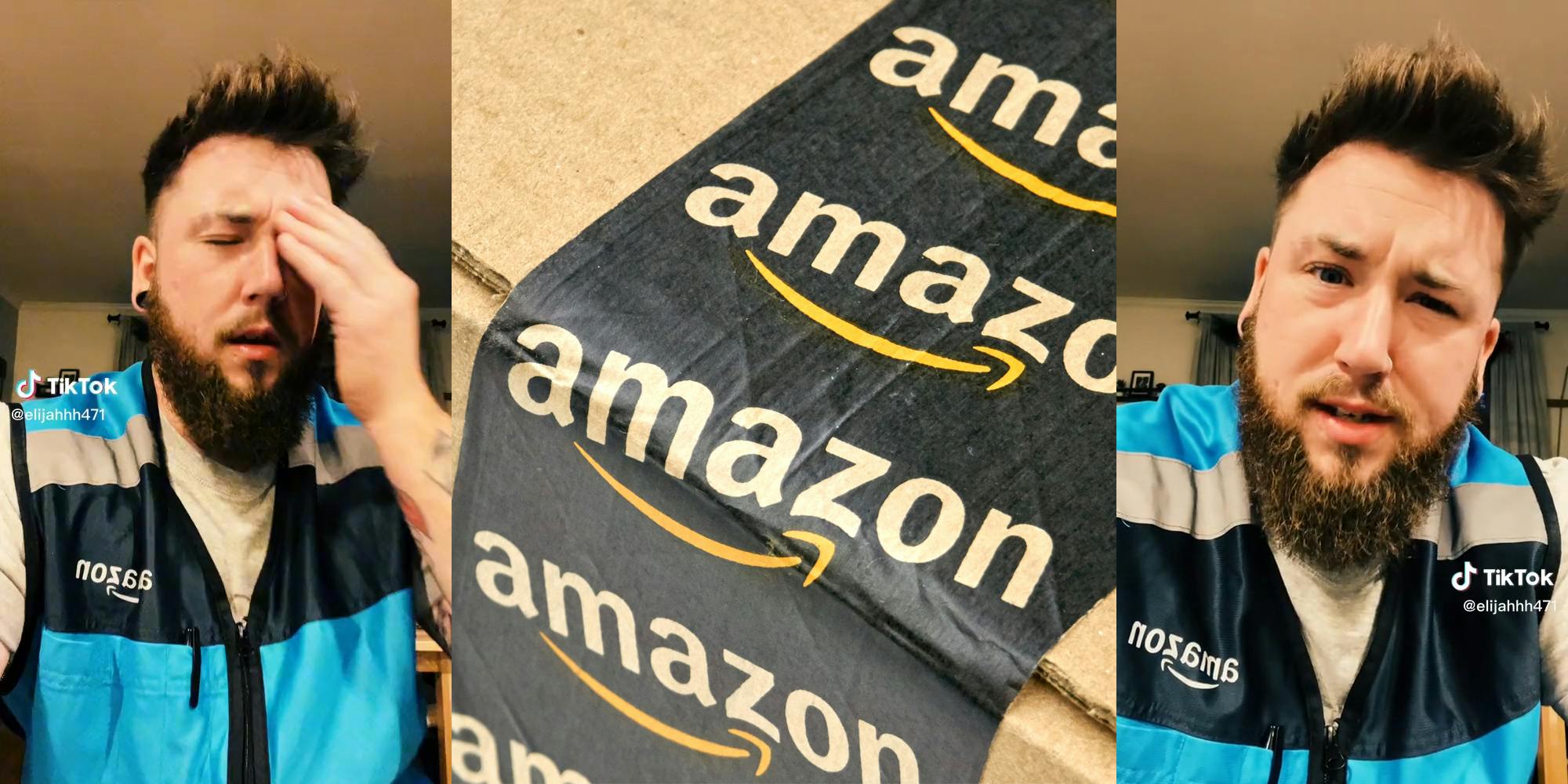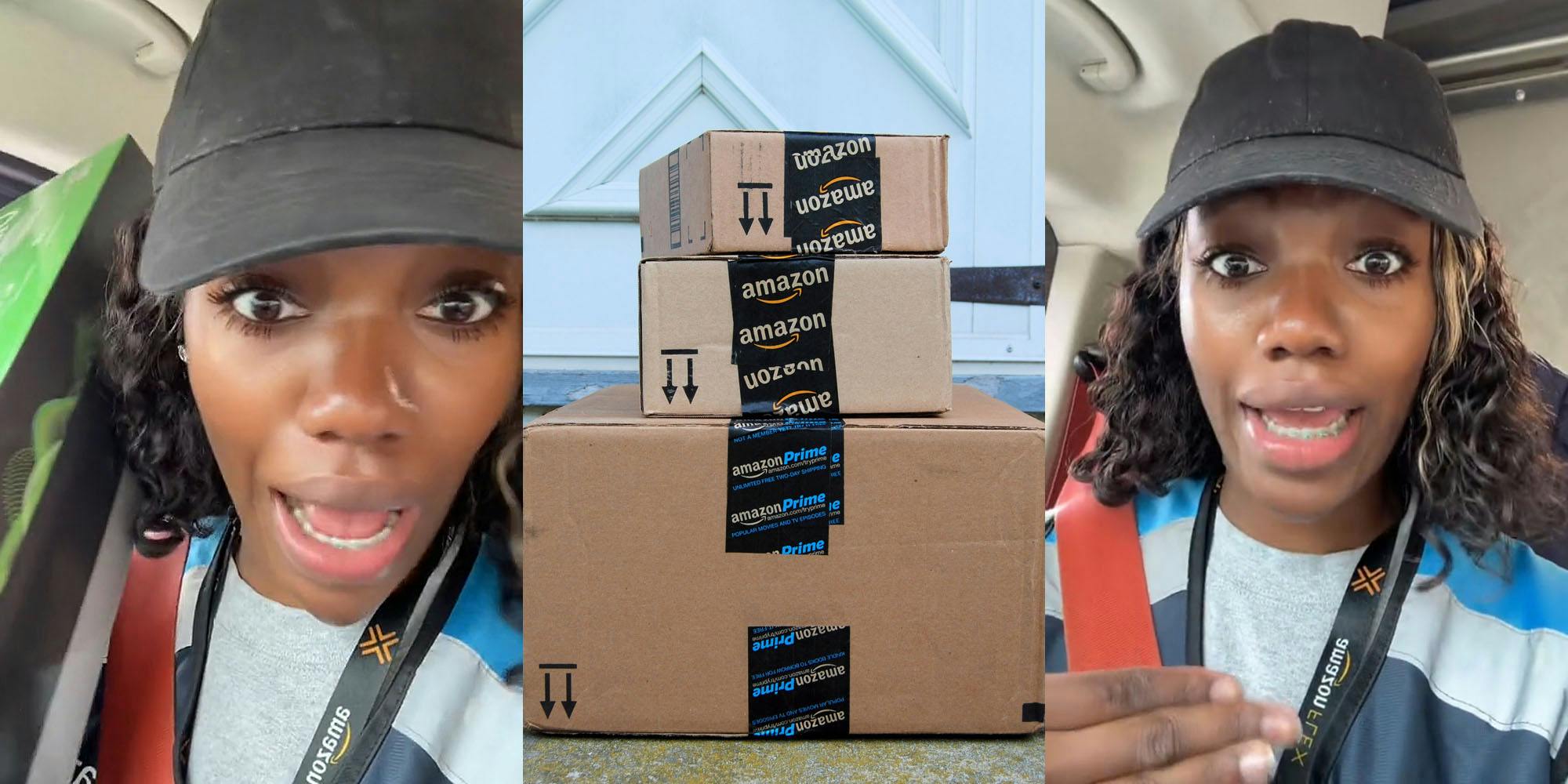As Amazon sales keep increasing year after year, so does the number of delivery drivers across the U.S.
Research by CapitalOne Shopping reveals that as of 2024, Amazon employs over 275,000 drivers through its Delivery Service Partner (DSP) program.
As the unsung heroes of our time, Amazon delivery drivers already face numerous challenges. They work long hours, have tight delivery schedules, and often lack job security. Luckily, there are ways we as consumers can make their lives and jobs a little easier—and in turn, have a smoother delivery experience for ourselves.
Let’s explore five delivery tips directly from Amazon delivery drivers.
If you’re a rural resident, setup a different box

Amazon delivery driver and TikToker A.Z. Almighty (@our_elite_finds) shared a PSA for rural customers: Set up a separate box for non-USPS deliveries.
In his video, he shows a plastic bin at the front gate of a rural home—presumably for non-United States Postal Service delivery drivers to use. He then praises it as a perfect setup.
“This is how you do it,” he says, pointing to a sign with logos for UPS, FedEx, DHL, Amazon, and USPS.
According to A.Z. Almighty, this setup makes sure packages are protected and provides clear instructions for drivers.
“The only other thing I ask is that you put your address on the gate or something,” wrote another delivery driver under the video.
A delivery vehicle doesn’t always look the way you think

An Amazon Flex driver, @notpregnantjustphat, posted a TikTok video sharing the safety concerns of delivering packages during overnight shifts.
In the clip, she urged customers to inform everyone in their household when expecting an Amazon package, especially for same-day deliveries, to avoid alarming anyone.
“Amazon drivers be out at 3am. They’ll be at your house at 4am, and everybody wants to go back home safely to their family,” she explained.
She noted that Amazon Flex drivers use their personal cars, which can look like any regular vehicle, adding to potential confusion or alarm. “You might see a Tesla, a Mercedes, a Honda, any kind of car,” @notpregnantjustphat explained.
In the comments, users suggested Amazon should provide clearer identification for drivers’ cars, like lighted signs similar to those used by Uber or Lyft. Amazon only provides drivers with orange safety vests, after all.
Drivers don’t see instructions right away

Amazon delivery driver Elijah (@elijahhh471) went viral on TikTok after sharing a PSA about delivery instructions.
In the clip, Elijah explained that he doesn’t see delivery instructions until he’s right outside the house, making requests like “call me 15 minutes before you arrive” impractical. He humorously adds, “I’ll give you 30 seconds?”
He also points out that delivery instructions don’t influence the delivery time. Requests such as “bring before 3 PM” are irrelevant since drivers have a delivery route that is set beforehand.
Additionally, drivers must deliver to the address on the package, so they ignore any additional addresses you put in the instructions.
Elijah stresses that delivery instructions should only include crucial information like your address, access codes, and where to leave the package. He questions the inclusion of unnecessary details, asking, “Why do you do it?”
Why your package can’t go in your mailbox

Amazon delivery driver A.Z. Almighty (@our_elite_finds) has another tip for shoppers.
This time, he informs shoppers that he legally cannot place their packages in mailboxes, since those are reserved only for United States Postal Service workers.
“These delivery instructions said leave the package in my mailbox. I don’t know, uh, if y’all are aware, the general public, but go ahead and chime in if you work for UPS, FedEx, or the post office…or Amazon,” A.Z. Almighty says as he’s seen dropping a package off.
“We are not allowed to touch your mailbox if we don’t work for the post office,” he states.
In the comments, a user echoed A.Z.’s PSA, writing: “Federal charges for anyone who is not a mailman if you get caught opening a mailbox unless its got your address!”
Don’t expect your order to be in a box

An Amazon delivery driver, Aniya (@aniyamitch), shared a PSA about gift shopping through the gigantic online retailer.
Aniya warns customers that unless they specify their orders should be in a box, there’s a chance it will arrive uncovered, potentially ruining the surprise.
“If you order something from Amazon for Christmas and it’s for somebody, please make sure that [expletive] ain’t at the house, because… we ain’t putting [expletive] in boxes no more,” Aniya says in her video while holding an unboxed Vizio sound bar. “I’m sorry. I’ve been hiding them for y’all, but I’m tired.”
Her video is an example of Amazon’s effort to reduce the number of boxes it uses through the “Ships in Its Own Container” (SIOC) initiative. If you select this option, the products are shipped to you in their original packaging to reduce waste. However, you can still request items to be boxed during the ordering process.


